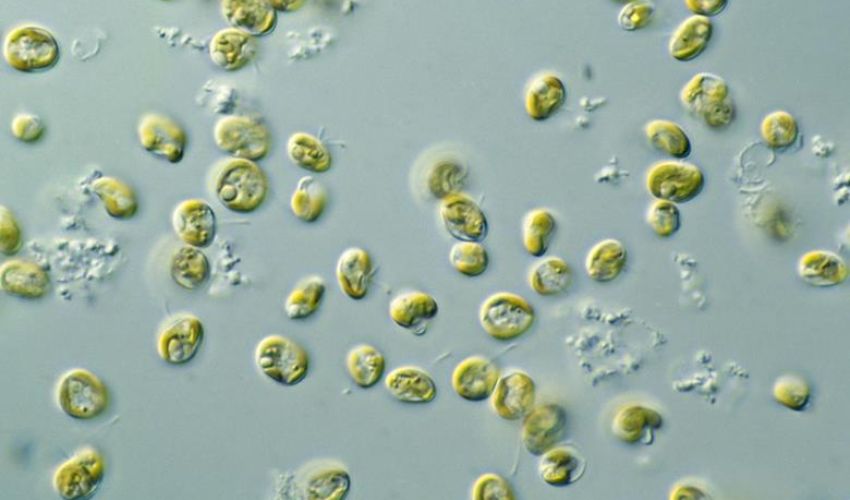Algae and Light: The Green Ink Revolutionizing Cultured Meat

In a world where sustainability and innovation go hand in hand, researchers from Pohang University of Science and Technology have made a groundbreaking discovery. By combining the power of algae and visible light, they have developed a bioink that could revolutionize the production of cultured meat. This eco-friendly ink, derived from alginate, a natural carbohydrate found in algae, holds the potential to enhance cell viability and printing resolution in 3D bioprinting. Let’s delve into this exciting development and explore the implications it holds for both the environment and the future of food production.
Algae, often overlooked for its soft and pulpy consistency, possesses remarkable ecological potential. Not only can it absorb atmospheric carbon dioxide, but it also generates significantly fewer carbon emissions. Recognizing its benefits, researchers have been exploring ways to utilize algae for environmental preservation and sustainable practices. In addition to its applications in cultivated meat production, algae holds promise in the engineering of artificial organs for patients suffering from organ failure.

3D printed bioink made from photocrosslinkable natural carbohydrate alginate (Photo credits: POSTECH)
Led by Professor Hyung Joon Cha and his team at Pohang University, this research focuses on enhancing the cell viability and printing resolution of bioinks used in 3D bioprinting. Conventional bioinks have faced limitations, including low cell viability and restricted cell mobility. To address these challenges, the team developed a microgel using a photocrosslinkable alginate derived from algae. This innovative bioink significantly improved cell proliferation, resulting in a four-fold increase compared to traditional bioinks.
The developed alginate-based bioink demonstrated exceptional properties. It exhibited reduced viscosity under external forces, allowing it to recover its shape even after deformation. This characteristic significantly increased the resolution and lamination capacity of the 3D-printed outcomes. The team’s findings, published in Carbohydrate Polymers, open up exciting possibilities for tissue engineering, regenerative medicine, and cultivated meat production.

Research team leader professor Hyung Joon Cha (Photo credits: POSTECH)
The newly developed alginate bioink not only offers improved performance but also addresses the cost and sustainability concerns associated with traditional bioinks. By utilizing alginate derived from algae and harmless visible light, the researchers have created an eco-friendly solution. Furthermore, the bioink can be produced cheaply from food waste such as cereal husks, reducing the overall cost of cultivated meat production. The process offers a sustainable alternative to animal-derived products like gelatine and collagen, making cultured meat more accessible and environmentally friendly.
With the growing interest in 3D printed meat and seafood alternatives, the global 3D printing market is set to reach $44.5 billion by 2026. The algae-based bioink opens up new avenues for the foodtech industry, allowing for the production of cultivated meat with the desired texture and structure. Companies worldwide are actively engaged in developing 3D-printed meat and seafood options, leveraging innovative technologies to meet the increasing demand for sustainable and ethical food choices.
The combination of algae and visible light in bioink development marks a significant step forward in the quest for sustainable food production. The breakthrough achieved by Professor Cha and his team at Pohang University demonstrates the immense potential of algae in revolutionizing the production of cultivated meat and artificial organs. This environmentally friendly solution offers improved cell viability, printing resolution, and cost-effectiveness. As we embrace this novel and disruptive idea, we move closer to a future where eco-friendly and ethically produced food becomes the norm, benefiting both our health and the planet we call home. In any case, check out the original source HERE.
What do you think of this 3D printed bioink ? Let us know in a comment below or on our LinkedIn, Facebook, and Twitter pages! Don’t forget to sign up for our free weekly Newsletter here, the latest 3D printing news straight to your inbox! You can also find all our videos on our YouTube channel.
*Cover photo credits: CSIRO







